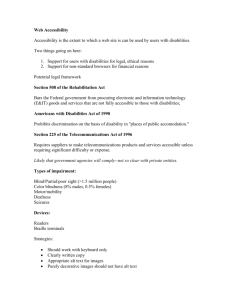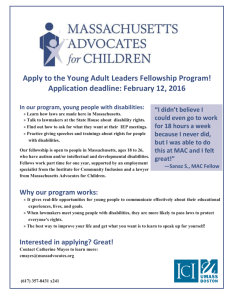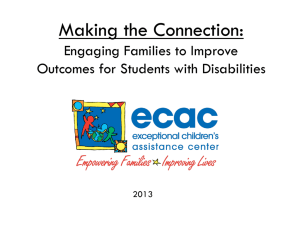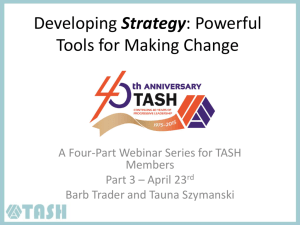Multiple Disabilities - American Library Association
advertisement
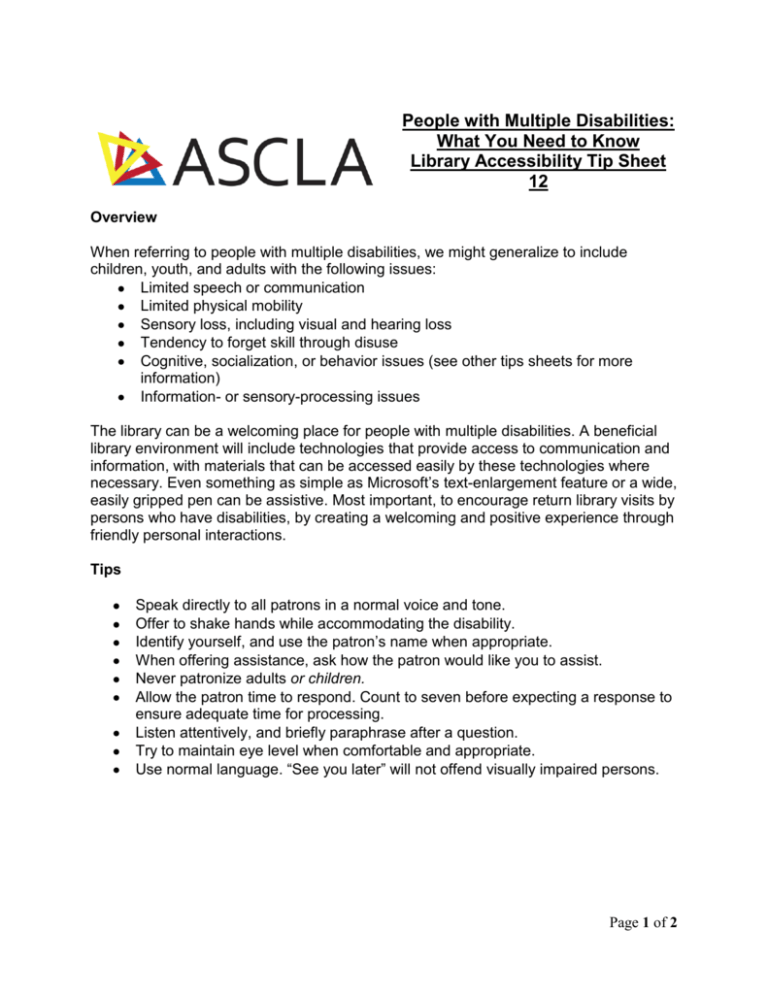
People with Multiple Disabilities: What You Need to Know Library Accessibility Tip Sheet 12 Overview When referring to people with multiple disabilities, we might generalize to include children, youth, and adults with the following issues: Limited speech or communication Limited physical mobility Sensory loss, including visual and hearing loss Tendency to forget skill through disuse Cognitive, socialization, or behavior issues (see other tips sheets for more information) Information- or sensory-processing issues The library can be a welcoming place for people with multiple disabilities. A beneficial library environment will include technologies that provide access to communication and information, with materials that can be accessed easily by these technologies where necessary. Even something as simple as Microsoft’s text-enlargement feature or a wide, easily gripped pen can be assistive. Most important, to encourage return library visits by persons who have disabilities, by creating a welcoming and positive experience through friendly personal interactions. Tips Speak directly to all patrons in a normal voice and tone. Offer to shake hands while accommodating the disability. Identify yourself, and use the patron’s name when appropriate. When offering assistance, ask how the patron would like you to assist. Never patronize adults or children. Allow the patron time to respond. Count to seven before expecting a response to ensure adequate time for processing. Listen attentively, and briefly paraphrase after a question. Try to maintain eye level when comfortable and appropriate. Use normal language. “See you later” will not offend visually impaired persons. Page 1 of 2 Resources National Rehabilitation Resource Center http://www.naric.com/ This website can serve as a gateway to resources for educators, persons who work with persons with disabilities and researchers wishing to learn more about disabilities. This website TASH www.tash.org International membership organization which advocates for people with disabilities to attain involvement in all aspects of life. This tip sheet, revised in 2010, is one in a series developed by the Association of Specialized and Cooperative Library Agencies, a division of the American Library Association. See www.ala.org/ascla. Page 2 of 2






